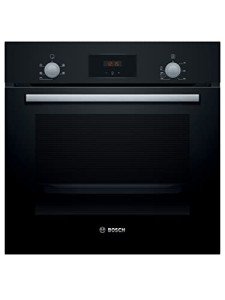Understanding Built-in Electric Ovens: A Comprehensive Guide
In contemporary kitchens, built-in electric ovens have become a basic function, offering benefit, efficiency, and a stylish integration into kitchen style. This article aims to inform property owners and cooking enthusiasts about the benefits of built-in electric ovens, key considerations when picking one, and maintenance ideas to ensure long-lasting functionality.
What is a Built-in Electric Oven?
A built-in electric oven is designed to be set up within cabinetry or walls, seamlessly mixing into the kitchen's architecture. Unlike standalone ovens, these designs save floor space and can be located at eye level, facilitating simple access and tracking while cooking.
Advantages of Built-in Electric Ovens
- Space Efficiency: These ovens utilize vertical space, making them ideal for smaller sized kitchens or those seeking to take full advantage of counter space.
- Aesthetic Appeal: Built-in ovens supply a tidy and modern-day look that improves the kitchen's total design.
- Ergonomics: They are set up at comfy heights, decreasing the strain on the back and knees, especially when filling or dumping dishes.
- Advanced Features: Many built-in electric ovens come with modern functions like wise controls, convection cooking, and self-cleaning alternatives, which can make cooking much easier and more effective.
- Enhanced Functionality: Models typically include extra functions such as several cooking modes, timers, and temperature probes.
Key Considerations When Choosing a Built-in Electric Oven
When choosing a built-in electric oven, numerous aspects ought to be taken into consideration to guarantee it meets your cooking requires and fits within your kitchen layout.
Size and Capacity
Built-in electric ovens usually are available in various sizes. built in double gas oven and hob packages to measure the assigned space to make sure an appropriate fit. Here are typical sizes:
- Single Oven: 24 to 30 inches broad, appropriate for many cooking tasks.
- Double Oven: Two different compartments, permitting you to prepare several dishes at different temperature levels.
- Wall Ovens: Available in large sizes, fit for extensive cooking experiences.
Features
Selecting features that line up with your cooking practices is vital. Consider the following alternatives:
- Convection Cooking: Distributes heat equally for consistent results.
- Smart Technology: Enables push-button control and preheating through mobile phone apps.
- Self-Cleaning: Simplifies upkeep and cleaning procedures.
- Steam Cooking: Adds moisture to meals for much better cooking outcomes.
Installation Requirements
Built-in electric ovens need sufficient electrical circuitry and ventilation alternatives. It's suggested to seek advice from experts throughout the installation phase to fulfill electrical codes and make sure security.
Price Range
The cost of built-in electric ovens can vary considerably from budget alternatives (₤ 600 - ₤ 1,200) to high-end designs (₤ 2,000 and above). Consider your budget and cooking frequency when making a choice.
| Cost Range | Features | Best For |
|---|---|---|
| ₤ 600 - ₤ 1,200 | Basic functions, manual controls | Casual cooks |
| ₤ 1,200 - ₤ 2,000 | Convection, clever technology | Serious home cooks |
| Above ₤ 2,000 | Premium products, advanced features | Professional chefs or gourmet cooking enthusiasts |
Maintenance Tips for Built-in Electric Ovens
Ensuring that an electric oven runs successfully involves regular upkeep. Here are some useful suggestions:
- Regular Cleaning: Wipe down the door and inside the oven after each usage to avoid grease buildup.
- Self-Cleaning Cycle: Utilize the self-cleaning function regularly (if available). Follow the producer's instructions for optimal efficiency.
- Check Seals and Gaskets: Inspect the door seals for wear and tear to preserve cooking effectiveness.
- Calibrate Temperature: Regularly check and adjust the oven's temperature level for precision cooking.
- Professional Servicing: Schedule yearly upkeep consult certified technicians, especially for advanced models with many electronic elements.
Frequently Asked Questions (FAQs)
1. Are built-in electric ovens more effective than standard ovens?
Yes, built-in electric ovens frequently have better insulation and functions like convection cooking that can prepare food faster and uniformly, conserving energy.
2. Can I install a built-in electric oven myself?
While some helpful individuals might pick to try a DIY installation, it is recommended to hire a professional to guarantee safe and compliant installation.
3. Just how much power does a built-in electric oven use?
Generally, built-in electric ovens consume in between 2,400 to 5,000 watts, depending upon the design and functions. Constantly describe the producer's specs for precise figures.
4. Do built-in electric ovens require special kitchen cabinetry?
Yes, built-in electric ovens need custom cabinetry or wall enclaves that support their weight and permit for proper ventilation. Ensure that the kitchen cabinetry complies with setup standards laid out by the maker.
Built-in electric ovens are a valuable addition to any contemporary kitchen, offering an array of functions that make cooking more practical and enjoyable. By understanding the benefits, selection requirements, and maintenance requirements associated with these ovens, consumers can make informed choices that align with their culinary requirements and way of life choices.

